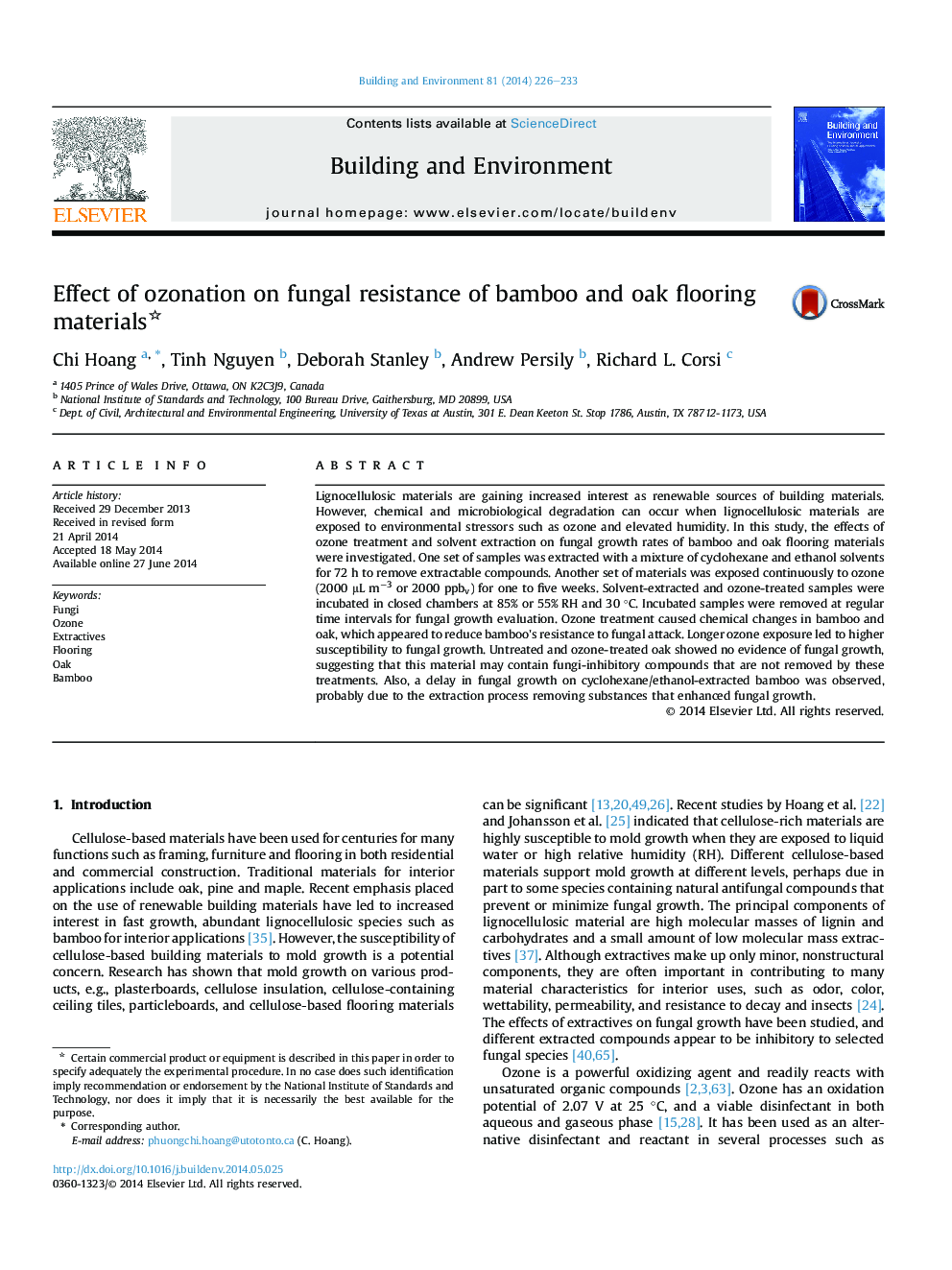| Article ID | Journal | Published Year | Pages | File Type |
|---|---|---|---|---|
| 6700314 | Building and Environment | 2014 | 8 Pages |
Abstract
Lignocellulosic materials are gaining increased interest as renewable sources of building materials. However, chemical and microbiological degradation can occur when lignocellulosic materials are exposed to environmental stressors such as ozone and elevated humidity. In this study, the effects of ozone treatment and solvent extraction on fungal growth rates of bamboo and oak flooring materials were investigated. One set of samples was extracted with a mixture of cyclohexane and ethanol solvents for 72 h to remove extractable compounds. Another set of materials was exposed continuously to ozone (2000 μL mâ3 or 2000 ppbv) for one to five weeks. Solvent-extracted and ozone-treated samples were incubated in closed chambers at 85% or 55% RH and 30 °C. Incubated samples were removed at regular time intervals for fungal growth evaluation. Ozone treatment caused chemical changes in bamboo and oak, which appeared to reduce bamboo's resistance to fungal attack. Longer ozone exposure led to higher susceptibility to fungal growth. Untreated and ozone-treated oak showed no evidence of fungal growth, suggesting that this material may contain fungi-inhibitory compounds that are not removed by these treatments. Also, a delay in fungal growth on cyclohexane/ethanol-extracted bamboo was observed, probably due to the extraction process removing substances that enhanced fungal growth.
Related Topics
Physical Sciences and Engineering
Energy
Renewable Energy, Sustainability and the Environment
Authors
Chi Hoang, Tinh Nguyen, Deborah Stanley, Andrew Persily, Richard L. Corsi,
